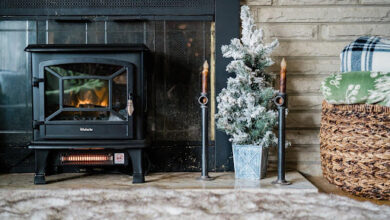A Complete Guide to Plastic Corrugated Sheets for Roofing

Roofing is an essential part of any building, protecting it from sun, rain, snow, and other natural elements.
When it comes to roofing materials, one option that has gained popularity in recent years is plastic corrugated sheets.
These sheets are made from a durable plastic material and have a characteristic wavy pattern on their surface.
In this guide, we will delve deeper into plastic corrugated sheets for roofing, exploring their benefits, uses, and installation process.
What are Plastic Corrugated Sheets?
Plastic corrugated sheets are roofing materials that are made from high-quality plastic. They are lightweight and easy to handle, which makes them a popular choice for various industrial, commercial, and agricultural applications.
These sheets are designed to have a corrugated profile, with alternating peaks and valleys, giving them added strength and stability.
The Benefits of Plastic Corrugated Sheets for Roofing
Plastic corrugated sheets offer several advantages over traditional roofing materials. Here are some of the key benefits of using plastic corrugated sheets for roofing:
- Durability: Plastic corrugated sheets are made from strong and sturdy plastic materials that are designed to withstand harsh weather conditions. They are highly resistant to impact, corrosion, and UV radiation, making them suitable for long-term use.
- Lightweight: Compared to traditional roofing materials such as metal or concrete, plastic corrugated sheets are significantly lighter. This makes them easier to handle and install, reducing the overall labor and transportation costs.
- Cost-effective: Plastic corrugated sheets are relatively inexpensive compared to other roofing materials. They are also low-maintenance, requiring minimal upkeep and repair. This makes them a cost-effective choice for both residential and commercial roofing projects.
- Versatility: Plastic corrugated sheets come in a variety of colors, sizes, and designs, allowing for customization to meet specific architectural requirements. They can be easily cut and shaped to fit any roof design, making them versatile and adaptable for various roofing applications.
- Energy efficiency: Plastic corrugated sheets have excellent insulating properties, helping to keep buildings cooler in summer and warmer in winter. This can lead to reduced energy consumption and lower heating and cooling costs.
- Water resistance: Plastic corrugated sheets are designed with overlapping edges and a corrugated profile, creating a watertight seal that prevents water leakage. This makes them suitable for areas with heavy rainfall or snowfall.
- Fire resistance: Plastic corrugated sheets are often made from fire-resistant materials, offering an added layer of safety compared to traditional roofing materials. They are less likely to ignite or contribute to the spread of fire.
- Recyclable: Many plastic corrugated sheets are made from recyclable materials, making them an eco-friendly choice for roofing. At the end of their lifespan, these sheets can be recycled and used to manufacture new products, reducing waste and promoting sustainability.
Plastic corrugated sheets provide a durable, cost-effective, and sustainable solution for roofing applications. Their versatility, energy efficiency, and resistance to water and fire make them a popular choice among architects, builders, and homeowners.
Uses of Plastic Corrugated Sheets for Roofing
Plastic corrugated sheets are suitable for various roofing applications due to their versatility and durability. Some of the common uses of plastic corrugated sheets for roofing include:
- Greenhouses: Plastic corrugated sheets are commonly used to create greenhouse roofs. They provide excellent insulation properties, allowing sunlight to enter while retaining heat. This helps in creating a favorable environment for plant growth.
- Sheds and Garages: Plastic corrugated sheets are often used for roofing sheds and garages. They provide a cost-effective solution that is easy to install and maintain. These sheets are also resistant to UV rays, preventing them from fading or degrading over time.
- Patio Covers: Plastic corrugated sheets can be used to create covers for patios, protecting from the elements while still allowing natural light to filter through. They are lightweight and easy to handle, making them a popular choice for DIY projects.
- Canopies and Awning: Plastic corrugated sheets are ideal for creating canopies and awnings. They offer protection from the sun and rain, making them suitable for outdoor spaces such as cafes, restaurants, and residential patios.
- Temporary Structures: Plastic corrugated sheets are often used for temporary structures such as event tents, construction site shelters, and storage sheds. They are lightweight, easy to transport, and can be quickly assembled, making them ideal for temporary or mobile applications.
Installing Plastic Corrugated Sheets for Roofing
Installing plastic corrugated sheets for roofing is a relatively straightforward process. Here is a step-by-step guide:
- Measure the area: Start by measuring the area where you will be installing the plastic corrugated sheets. This will help you determine the number of sheets and the amount of materials you will need.
- Prepare the surface: Ensure that the surface is clean and free from any debris or sharp objects. If needed, repair any damaged or uneven areas to provide a smooth and even base for the sheets.
- Install the ridge caps: Begin by installing the ridge caps at the highest point of the roof. These caps will act as a seal and prevent water from entering through the top of the sheets.
- Lay the sheets: Start laying the plastic corrugated sheets from one side of the roof. Make sure each sheet overlaps the previous one by at least one corrugation. Use screws or nails to secure the sheets in place, ensuring they are evenly spaced.
- Cut the sheets: If needed, cut the sheets to fit around any obstacles such as vents or chimneys. Use a sharp utility knife and a straightedge to ensure clean and accurate cuts.
- Secure the sheets: Along the edges of the sheets, secure them with J-channel or flashing to provide a tight and watertight seal. This will prevent any water from seeping underneath the sheets.
- Install the side caps: Once all the sheets are in place, install the side caps to cover the edges and provide a finished look. Again, ensure that these caps are securely fastened to prevent any water intrusion.
- Seal the screws or nails: To further ensure a waterproof seal, apply a silicone sealant or roofing cement over the screws or nails. This will prevent any potential leaks and increase the overall durability of the installation.
Conclusion
Plastic corrugated sheets offer numerous benefits for roofing applications, including durability, weather resistance, versatility, and cost-effectiveness. They are suitable for various residential, commercial, industrial, and agricultural projects.
When installing plastic corrugated sheets, proper preparation, measurement, and sealing are crucial for a long-lasting and reliable roof. By choosing plastic corrugated sheets for your roofing needs, you can enjoy a lightweight, durable, and cost-effective solution that will protect your building for years to come.



